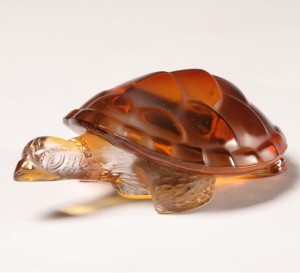 Amber is an extremely flexible stone, so many jewelers and craftsmen have tried to combine amber and art in their creations. Not everyone can create art using amber, due to the fact that it is a challenging stone, requiring creativity, imagination and dedication.
Amber is an extremely flexible stone, so many jewelers and craftsmen have tried to combine amber and art in their creations. Not everyone can create art using amber, due to the fact that it is a challenging stone, requiring creativity, imagination and dedication.
Dating back thousands of years, people used their religious beliefs and craftsmen not only to create jewelry, but also to carve amber beads and charms or any other type of symbolic object which would be used in healing rituals, therapies, festivals or home decorating. This was their way of combining amber and art at the same time. The Etruscans used amber each time they depicted gods and divine entities, while the Greeks believed that amber is the substance of the sun, calling it "elektron". There are also Greek myths about amber and the stone's power. It is interesting how the Romans were fascinated by this stone and how their legions were dispatched in the Baltic area just to search for amber.
The oldest amber artifact excavated from ruins underground is a hewn bead dating back to approximately 11,000-9000 B.C. These findings give amber an important cultural significance. Following the years 3400 to 3100 B.C., large-scale productions begin to occur, using objects carved in am er. Soon after, between 3100 and 2500 B.C., amber trade began in the Baltic region, where large deposits of transparent amber were found. We can say that amber and art share a lot of history together.
 During the Middle Ages and focusing especially on the 14th century, amber guild establishments appeared in the Baltic area and along the Baltic coast. These guilds' artisans and craftsmen made good use of amber's beautiful features such as delicacy, flexibility, colors and transparency. An impressive number of decorative objects for religious or court use were created using this fascinating stone.
During the Middle Ages and focusing especially on the 14th century, amber guild establishments appeared in the Baltic area and along the Baltic coast. These guilds' artisans and craftsmen made good use of amber's beautiful features such as delicacy, flexibility, colors and transparency. An impressive number of decorative objects for religious or court use were created using this fascinating stone.
The 16th and 17th centuries brought a new perspective for craftsmen interested in combining amber and art. Artisans perfected the old methods of amber sculpting and relief amber carving, turning these traditional techniques into new skills. One of them is the "encrustation", referring to the gluing intricate amber mosaics that were previously pieced together onto a piece of wood. The other one is the "verre eglomisee", a technique that focused on engraving ornaments and designs such as landscapes or phrases onto the back of clear and transparent amber pieces. The details were often highlighted using gold foils or pieces of ivory. This led to surpassing the previous centuries' creations and combinations of amber and art in terms of size, intricacy, beauty and mastery.
 Some objects created from amber would also be used as boxes to store other amber objects.For example, the rich would use a so-called Knight's Set - a case containing clothes brushes, toothbrushes, jars, ointments, snuff boxes and other amber objects. Some of them can be found in the Ekaterininskaya Palace, Saint Petersburg.
Some objects created from amber would also be used as boxes to store other amber objects.For example, the rich would use a so-called Knight's Set - a case containing clothes brushes, toothbrushes, jars, ointments, snuff boxes and other amber objects. Some of them can be found in the Ekaterininskaya Palace, Saint Petersburg.
These are only a few examples and reasons why amber and art are an amazing combination and why craftsmen all around the world enjoy working with this semi-precious stone to create wonderful, amazing things.



